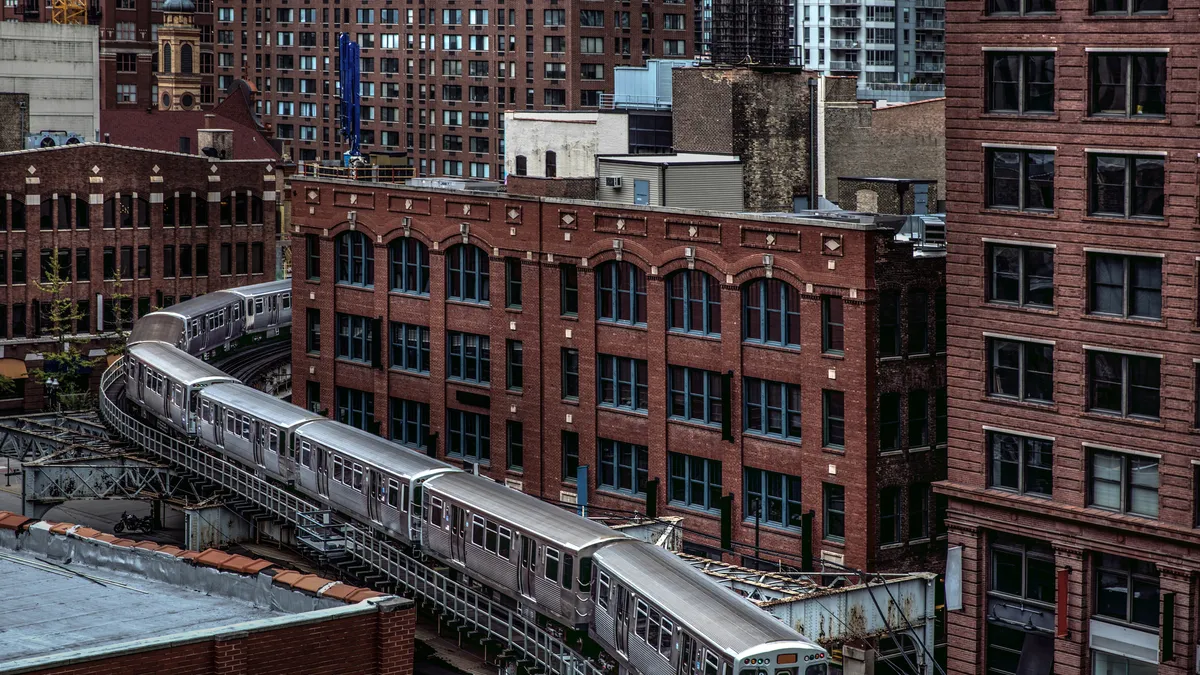Dive Brief:
- The U.S. Department of Energy's Better Buildings Initiative has helped partners save nearly $11 billion over the last decade, while also avoiding 105 million tons of carbon dioxide emissions and reducing water use by 8.5 billion gallons, the agency said in its annual report issued June 9.
- Announced by the Obama administration in 2011, the program has grown to include 32 Fortune 100 companies, 12% of the U.S. manufacturing energy footprint and 13% of the nation's commercial building space. The program challenges businesses, manufacturers, cities, states, universities and school districts to improve building energy efficiency by at least 20% over a decade.
- DOE says 20 organizations achieved their energy efficiency goals in the past year, including the Boston-based Preservation of Affordable Housing (POAH). The multifamily partner achieved 20% energy savings across its 6.9 million square feet of space in just seven years by improving building enclosures, making boiler control upgrades, LED lighting retrofits, and the addition of onsite renewable energy generation.
Dive Insight:
There is a growing focus on the energy use of the nation's building stock, and how they can be transformed into grid resources. DOE's Better Buildings challenge launched in 2012 and since then has helped partners save almost 1.8 quadrillion Btus.
According to the agency, that is equivalent to the annual electricity consumption of 27 million homes.
"We are turning efficient energy and buildings technologies into tangible cost savings," Under Secretary of Energy Mark Menezes said in a statement. And achievements go beyond just energy reductions.
The program has helped enable $23 billion in efficiency project investments, including $4.2 billion in the past year. And partners have implemented energy management and information systems across more than 530 million square feet of buildings, saving nearly $60 million annually.
More than 400 organizations have joined the Better Buildings Residential Network, and have finished more than 220,000 home energy upgrades to date.
"Achieving greater energy efficiency in our affordable housing properties not only helps address climate change, but it also helps low-income residents reduce their energy bills," POAH President and CEO Aaron Gornstein said in a statement.
Similarly, national affordable housing nonprofit Mercy Housing announced it has achieved energy savings of 24% due to greater efficiency efforts across its portfolio since joining the challenge in 2013. The group says it is the first national multifamily housing organization to achieve the Better Buildings energy savings goal.
"This is a tremendous accomplishment," Mercy Housing President and CEO Jane Graf said in the announcement. Along with reduced energy and operations costs, the group said it has also helped improve resident health.
Mercy Housing said it "focused on finding large scale opportunities that did not require capital for implementation" in order to improve efficiency across 21 million square feet of its building portfolio. The group implemented more than 240 efficiency projects by leveraging rebates, changing its procurement guidelines and switching to newer technologies.
Mercy Housing partnered with energy services company Affordable Community Energy Services on projects, leveraging a payment model based on measured, weather-normalized, post-implementation energy savings.
DOE's program assessment also praised the work of local governments in reducing building energy use. State and utility energy retrofit programs offer "significant potential to improve the efficiency of multifamily buildings," the agency said.
"Evidence shows such programs can cost-effectively reduce energy consumption by 30% for natural gas and 15% for electricity," according to the annual report. "Municipal green building codes and ordinances are also helping to drive energy efficiency and renewable energy advances in the multifamily sector."
DOE is also expanding the Better Buildings program. The agency's Office of Energy Efficiency and Renewable Energy has announced four new efforts under the umbrella challenge: the Better Buildings Workforce Accelerator, the Better Buildings Sustainable Corrections Infrastructure Accelerator, the Integrated Lighting Campaign and the Building Envelope Campaign.
The efforts aim to improve energy productivity, grow investment in renewable energy and energy storage in public facilities, integrate advanced lighting controls and help building owners and managers develop more energy-efficient walls, windows, roofs and foundations.
Last year, the Brattle Group estimated that in 2030 buildings' cost-effective load flexibility potential in the United States could reach 198 GW, or about 20% of national peak load. If fully leveraged, that could deliver more than $16 billion in annual savings in the next decade, according to the report.














